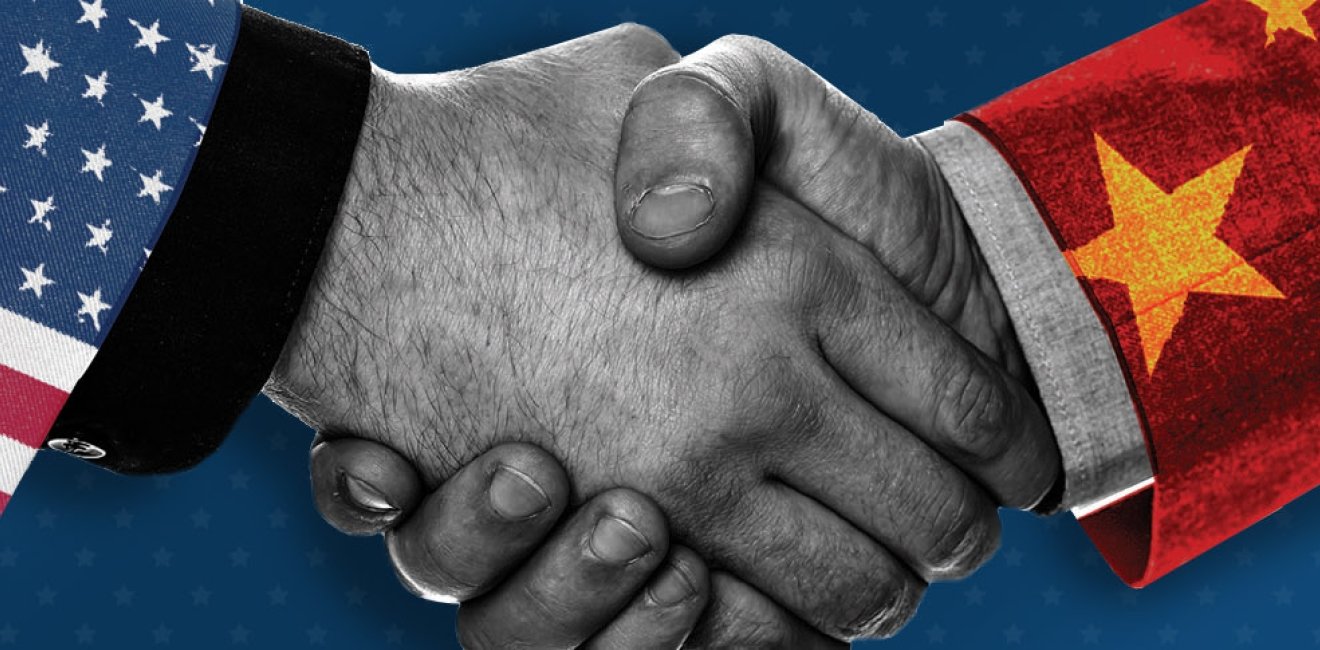Great power competition has cast a shadow over our global response to the COVID-19 pandemic. The outbreak should have been a chance for China and the United States to work together for a common cause. Instead, the pressures it has unleashed have inflamed tensions between the two countries.
The looming climate crisis is also a double-edged sword for great power relations. On the one hand, this global challenge that no country can solve alone should be a catalyst for cooperation. On the other hand, climate change can act as a destabilizing “risk multiplier” in geopolitics. It aggravates stressors on societies, economies, and institutions, and opens new areas for competition that can exacerbate friction between states.
Cohesion or conflict? Which of these countervailing forces of climate change prevails may be the most important question of our lifetimes. The answer will be shaped by political will and leadership. It will also depend on the course of China-U.S. relations.
China and the United States are the world’s two largest economies, energy consumers and carbon emitters, jointly accounting for over 40 percent of global emissions. They are leaders in clean tech, industry standards, and represent the developed and developing world respectively. Interplay between these two “climate superpowers” will shape prospects for effective climate governance and the development and deployment of clean technologies.
If they can work together, China and the United States have the critical mass to put us on the road to a sustainable climate future. But if they can’t cooperate, it is difficult to see how we can get there.
Great Power Relations in the Age of Climate Change
Of the many historical analogies applied to China-U.S. relations in the 21st century, it is the Cold War metaphor that has become most pervasive.
Viewed through this lens of bipolar zero-sum competition, the divisive potential of a climate crisis stands out. Environmental flux and the quest for decarbonization simply open new areas for great power rivalry, whether the prize is control over new waterways and undersea resources in the melting Arctic, dominance in climate-adaptive technologies, or access to the critical minerals that enable these. Decoupling and the emergence of distinct trade blocs, in this view, inhibit growth and lead to suboptimal patterns of clean technology adoption, while discord and strategic competition hinder progress on multilateral climate governance.
This framing does not make for a cheery outlook. But is it the right way to understand China-U.S. relations in an age of climate change?
Each era of great power relations has its own dynamic and characteristics. Two features of 21st century geopolitics make China-U.S. relations quite different to great power relations that came before.
The first is interdependence. Economic globalization and value chains have bound the great powers of our age together in a way quite unlike the Cold War or most other models from history. Some argue that the pressures of decoupling and deglobalization may weaken these linkages. But even so, COVID-19 shows that the effects of “ecological globalization” are only getting stronger. Climate change links our fates together via our shared atmosphere and ecosystems. Indeed, failure to manage climate change could also increase the risk of future pandemics by impacting natural habitats and raising the chance of zoonotic transmission. In the 21st century, the greatest threats we face are not from other states but are transnational in nature, like climate change and epidemics.
The second feature is multipolarity. Long-term structural trends, in particular the rise of Asia and emerging markets, mean that no single power can dictate global norms and rules by itself. The shift of gravity is arguably even more pronounced with respect to climate change. In 2000, Europe and North America made up more than 40 percent of global energy demand and developing Asian economies around 20 percent. This situation will be completely reversed by 2040 according to IEA forecasts. Carbon emissions from India’s power sector will overtake that of the U.S. before 2030. No solution to climate change is possible without the joint efforts of a broad coalition of developed and developing countries.
These realities call for a new understanding of security and power in the 21st century. Cross-cutting non-traditional security issues matter more than ever and cannot be addressed with brute military or economic force. In the face of a common existential threat like climate change, the salient notion is not “power over” but “power with” other countries, to draw on Joseph Nye’s distinction.
Foregrounding Climate Response in China-U.S. Relations
One paradox of the Cold War was that deadly nuclear weapons brought a degree of stability to direct interactions between the superpowers. Both sides recognized they had to cooperate to avoid mutually assured destruction.
Compared to the threat of nuclear weapons, climate change is a more complex problem. It involves more actors, greater uncertainty, difficult tradeoffs, and questions of equity between countries and generations. However, in the long-run, there is a certain parallel in logic of nuclear weapons and climate change. Both demand coordination and cooperation to avert an outcome that destroys everyone. Like the Cold War in the last century, great powers in the 21st century must also work together to prevent a potential catastrophe, albeit one that unfolds gradually rather than ends in a bang.
But the cooperative logic of climate change goes far beyond simply avoiding disastrous lose-lose outcomes. The shift to a carbon-neutral world presents many tangible rewards for China and the United States. It would help both countries to protect their environments, create wealth for their citizens, and edge closer to energy security. Reduced dependency on fossil fuels and the shipping lanes that transport them could also reduce tensions in potential flashpoints such as the South China Sea.
Clean tech will be a huge growth sector in years and decades to come—and it will have to be, given that fossil fuels still account for 84 percent of global primary energy consumption. The World Bank estimates that climate change commitments have opened nearly $23 trillion in opportunities for climate-smart investments in emerging markets alone by 2030. Chinese and U.S. companies have complementary strengths in low-carbon sectors. China is a top manufacturer of climate-friendly technologies such as wind and solar PV; the United States is a leader in systems that integrate these products into power grids and cities. By working together, they can tap synergies to develop new solutions and unlock third market opportunities in areas like infrastructure, green buildings, and smart cities. On top of common environmental concerns, these partnerships and shared economic interests would give groups on both sides more incentives to maintain stable bilateral relations, providing a ballast that has been lacking in recent years.
The vision of China and the United States as joint architects of a low-carbon future might seem like a tall order in the current moment, with bilateral tensions frayed and a climate skeptic in the White House. But it is worth remembering that green issues were a bright spot for the relationship until recently. China-U.S. cooperation was instrumental in the 2015 Paris climate agreement. The U.S.-China Climate Change Working Group, created in 2013, saw fruitful collaborations and sharing of expertise between companies from both countries in fields such as smart grids, carbon capture, and vehicle emissions reduction.
In the long-term, China remains optimistic that the United States will again become an active partner in climate management, given the growing global consensus and support for action among younger generations. Clearly, the upcoming presidential election weighs heavily on near-term prospects for climate cooperation at the national level. But regardless of the outcome, there are other ways for the two sides to work together.
China can cooperate more with the United States at the sub-national level. For example, the California-China Climate Institute was launched last September to exchange ideas, bring experts back and forth between the two countries, and promote more ambitious policy. There is scope for more such platforms to facilitate cooperation between policymakers and industry, such as climate summits at the state-provincial or municipal level, though subnational governments will eventually need more support from their federal or central counterparts.
Like the Pugwash Conferences on science and world affairs served as a channel for dialogue during the Cold War, Track II diplomacy can play an important role in China-U.S. climate cooperation. More exchange between think tanks and nonprofit organizations across the Pacific can help strengthen understanding and explore solutions for mutually beneficial collaboration.
Once the right political window opens in Washington, China and the United States should seize the chance to foreground climate change in the bilateral relationship. In this way, they can nurture its cohesive potential and help proactively manage its destabilizing effects.
It is perhaps inevitable that the China-U.S. relationship will be colored by rivalry and disagreements. But we must not let unbridled competition undermine efforts to overcome the gravest threats to humanity. The Cold War shows it is possible for leading powers to cooperate on existential threats even amidst intense strategic rivalry. Yet in many other ways, it is a flawed analogy to understand a 21st century world that is more multipolar and interconnected than ever, not only through economic and cultural links, but also shared challenges like climate change. Our heating planet needs more imaginative forms of statecraft in great power relations that can ringfence bilateral frictions and spur cooperation to manage our global commons. To lose sight of that bigger picture would be the biggest strategic mistake of all.
Author


Environmental Change and Security Program
The Environmental Change and Security Program (ECSP) explores the connections between environmental change, health, and population dynamics and their links to conflict, human insecurity, and foreign policy. Read more

Explore More
Browse Insights & Analysis
Can Climate-Resilient Agriculture Become an Engine for Syria’s Post-Conflict Recovery?

ECSP Weekly Watch | March 10 – 14

ECSP Weekly Watch | February 17 – 21

